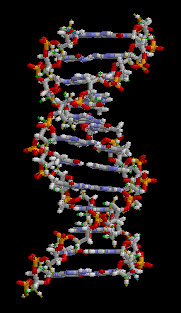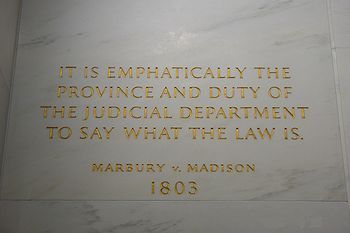In this weeks “Now We Know” segment, Up with Chis Hayes host Chris Hayes notes a new study from Brandeis that shows how the wealth gap between black people and white people in American has not only remained vast, but has grown massively over the last quarter century. Discussing what they have learned this week with Chris are Saru Jayaraman, author of “Behind the Kitchen Door,” co-founder of Restaurant Opportunities Center; Andrew Moesel, spokesperson for the New York State Restaurant Association; Victoria Bruton, restauarant worker and member of Restaurant Opportunities Center; and Tom Colicchio, renowned chef, executive producer of the new documentary “A Place at the Table.”
Study shows racial wealth gap continues to widen
by Christine Dugas, USA Today
Years after the civil rights movement, racial inequality continues to deepen.
The wealth gap between white and African-American families has nearly tripled over 25 years, according to a study (pdf) released today by the Institute on Assets and Social Policy at Brandeis University. [..]
Many Americans still believe that racial inequality is related to individual behavior, choices, character, marriage and child bearing, says Thomas Shapiro, IASP director. But homeownership has been the biggest cause of racial wealth disparity, followed by income, the study found. In the past 25 years, education has failed to be the great equalizer that many expected.
Sequestration Repeal Pushed By Progressive House Democrats
by Dave Jamieson, Huffington Post
Rep. John Conyers (D-Mich.) introduced a one-sentence bill on Thursday entitled the “Cancel the Sequester Act of 2013,” which would eliminate the $85 billion in cuts looming at week’s end as part of the $1.2 trillion in defense and non-defense cuts that Congress imposed on itself over the next decade with the Budget Control Act of 2011. According to Conyers’ office, Reps. Sheila Lee Jackson (D-Texas) and Frederica Wilson (D-Fla.) will co-sponsor the repeal bill, and many members of the Congressional Progressive Caucus are expected to follow suit.
“If Congress can’t or won’t come together to craft bipartisan agreement, I believe we have a duty to avert these catastrophic cuts by any means necessary,” Conyers told HuffPost in an email. The repeal bill “would give the leaders of both parties the time needed to reach some consensus on budget issues without forcing the average American to pay the price for Washington’s dysfunction.”
State Department Paves Way for Keystone XL Approval, Ignores Reality of Climate Change Impacts
by Gabe Elsner
This afternoon, the State Department released its Supplementary Environmental Impact Statement (SEIS) on the controversial Keystone XL (KXL) pipeline, claiming that the pipeline will “not likely result in significant adverse environmental effects.” The SEIS paves the way for President Obama’s approval of the pipeline despite widespread concern over the climate impacts of tar sands oil.
The State Department assessment does acknowledge that excavation of the Canadian tar sands oil would result in 17 percent more climate change emissions than the average barrel of heavy crude oil. But the report continues to say that the KXL pipeline would have no adverse impact on climate change because if the pipeline were not approved, companies would ship tar sands oil via railroad.
Christie Says He’ll Take U.S. Money to Expand Medicaid
by Kate Zernike, The New York Times
Gov. Chris Christie, one of the most strident Republican critics of President Obama’s health care overhaul, announced on Tuesday that he would accept federal money to expand the Medicaid program in New Jersey.
The expansion, which the governor described in his annual budget address to the Legislature, would provide health insurance to 104,000 of the poorest 1.3 million residents currently living without it, though some groups say the number could be higher.
Mr. Christie emphasized that it was a financial decision, not a philosophical shift; if New Jersey did not take the money, he said, the federal government would give it to other states.
Taliban Attacks Drop Reported By ISAF Was Incorrect
by Robert Burns, Huffington Post
In response to Associated Press inquiries about its latest series of statistics on security in Afghanistan, the coalition command in Kabul said it had erred in reporting a 7 percent decline in attacks. In fact there was no decline at all, officials said.
Defense Secretary Leon Panetta, who is among the senior officials who had publicly repeated the assertion of an encouraging drop-off in Taliban attacks last year, was disturbed to learn of the error, said his spokesman, George Little.
“This particular set of metrics doesn’t tell the full story of progress against the Taliban, of course, but it’s unhelpful to have inaccurate information in our systems,” Little said.
Covert Malaysian Campaign Touched A Wide Range Of American Media
Outlets from Huffington Post to National Review carried pieces financed by the Malaysian government. An international campaign against Anwar Ibrahim.
A range of mainstream American publications printed paid propaganda for the government of Malaysia, much of it focused on the campaign against a pro-democracy figure there.
The payments to conservative American opinion writers – whose work appeared in outlets from the Huffington Post and San Francisco Examiner to the Washington Times to National Review and RedState – emerged in a filing this week to the Department of Justice. The filing (pdf) under the Foreign Agent Registration Act outlines a campaign spanning May 2008 to April 2011 and led by Joshua Trevino, a conservative pundit, who received $389,724.70 under the contract and paid smaller sums to a series of conservative writers.
On this day in 1887, Anne Sullivan begins teaching six-year-old Helen Keller, who lost her sight and hearing after a severe illness at the age of 19 months. Under Sullivan’s tutelage, including her pioneering “touch teaching” techniques, the previously uncontrollable Keller flourished, eventually graduating from college and becoming an international lecturer and activist. Sullivan, later dubbed “the miracle worker,” remained Keller’s interpreter and constant companion until the older woman’s death in 1936.

 On this day in 1836, the
On this day in 1836, the  The Republic of Texas was created from part of the Mexican state
The Republic of Texas was created from part of the Mexican state  On this day in 1961, President John F. Kennedy issues Executive Order #10924,
On this day in 1961, President John F. Kennedy issues Executive Order #10924,  The
The  DNA was first isolated by the Swiss physician
DNA was first isolated by the Swiss physician  On this day in 1827,
On this day in 1827, 

 In 1897 acting Yellowstone superintendent Colonel S.B.M. Young proposed expanding that park’s borders south to encompass the northern extent of Jackson Hole in order to protect migrating herds of elk. Next year,
In 1897 acting Yellowstone superintendent Colonel S.B.M. Young proposed expanding that park’s borders south to encompass the northern extent of Jackson Hole in order to protect migrating herds of elk. Next year,  In 1928, a Coordinating Commission on National Parks and Forests met with valley residents and reached an agreement for the establishment of a park. Wyoming Senator
In 1928, a Coordinating Commission on National Parks and Forests met with valley residents and reached an agreement for the establishment of a park. Wyoming Senator  On this day in Japan, the Plum Blossom Festival is held. The Festival at the
On this day in Japan, the Plum Blossom Festival is held. The Festival at the 
 On this day in
On this day in